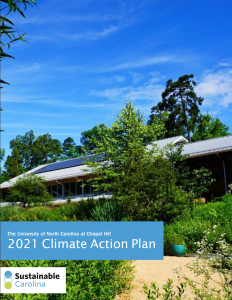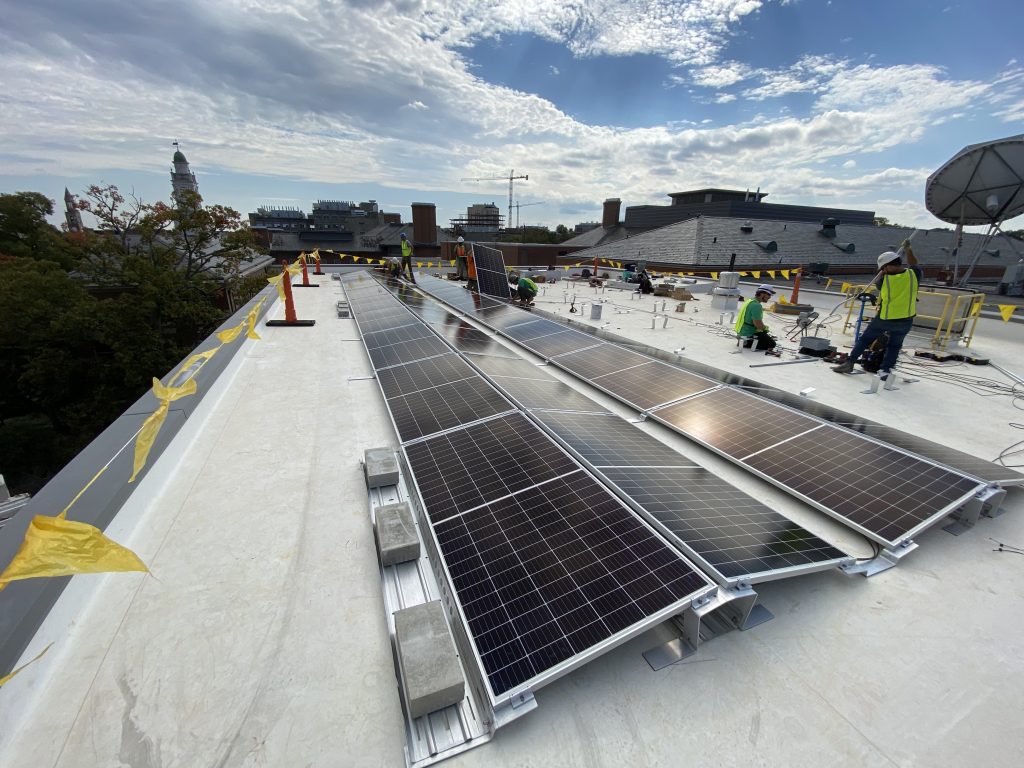Climate Action Plan
 In 2007, The University of North Carolina at Chapel Hill became a charter signatory of the American College and University Presidents’ Climate Commitment. In 2009, Carolina published its first Climate Action Plan. In this first plan, Carolina pledged to be carbon neutral by 2050 and established 15 near-term strategies to reach this goal.
In 2007, The University of North Carolina at Chapel Hill became a charter signatory of the American College and University Presidents’ Climate Commitment. In 2009, Carolina published its first Climate Action Plan. In this first plan, Carolina pledged to be carbon neutral by 2050 and established 15 near-term strategies to reach this goal.
Over the past decade, Carolina has implemented 75% of the near-term strategies from the 2009 Climate Action Plan. These strategies, along with other actions, have resulted in a 36% decrease in greenhouse gas emissions, despite a 27% increase in campus square footage and a 9% increase in the campus population.
In 2019, both the Intergovernmental Panel on Climate Change and the U.S. Federal Government issued reports emphasizing the need for immediate climate action and the potential consequences of not taking action. The responsibility of being a leader in climate action has never been greater for Carolina than it is now. The 2021 Climate Action Plan represents the first step of our renewed commitment to sustainability, together.
A static report released every 5-10 years is not the most effective way to plan for carbon neutrality. Because the technologies, ideas, and resources available to Carolina can change quickly, the Climate Action Plan should be able to as well. For these reasons, Carolina has created this web-based Climate Action Plan that can be updated as our progress and plans evolve.

